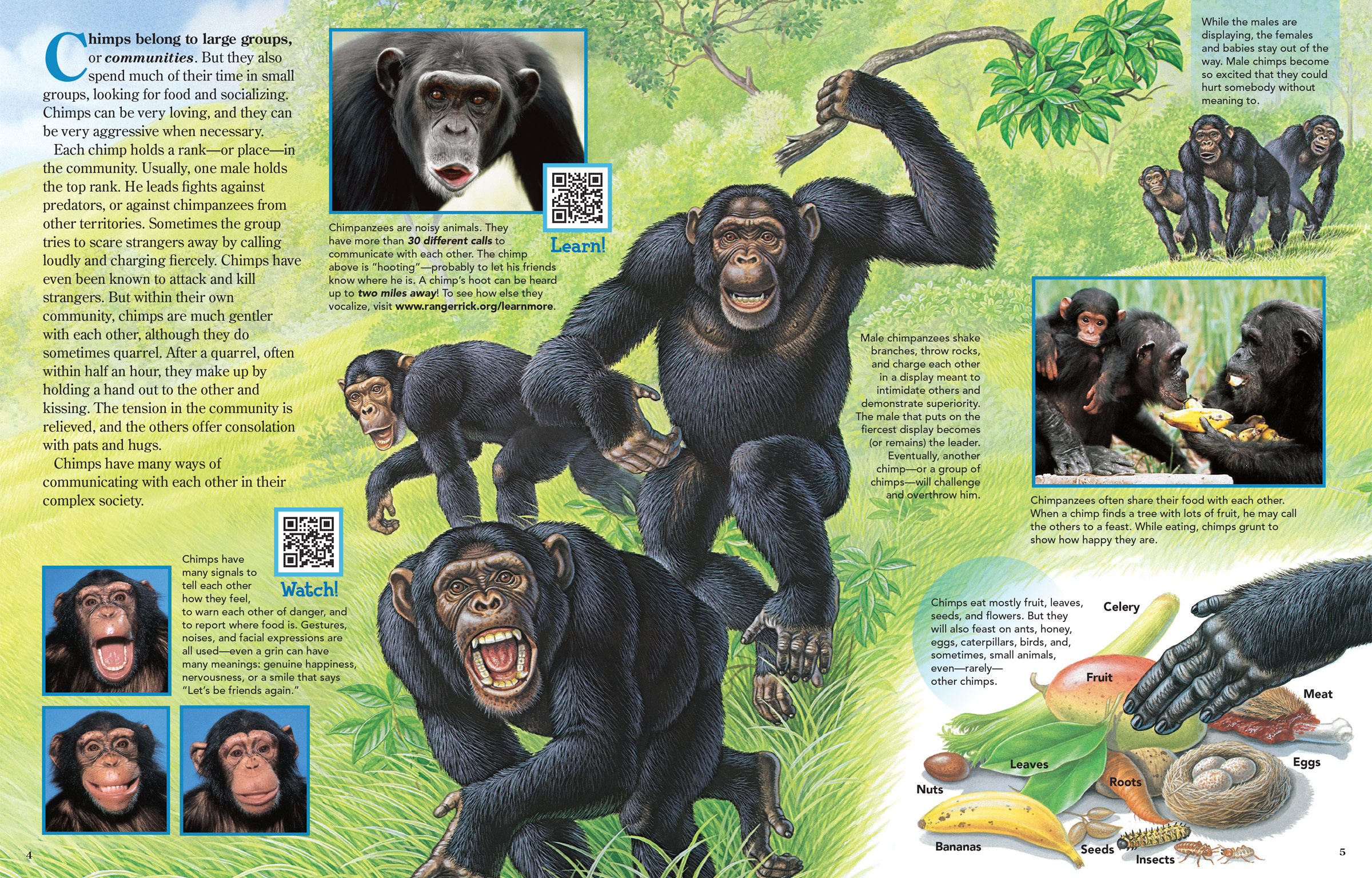
How Chimps Communicate
ByChimps belong to large groups, or communities. But they also spend much of their time in small groups, looking for food and socializing. Chimps can be very loving, and they can be very aggressive when necessary.
Each chimp holds a rank—or place—in the community. Usually, one male holds the top rank. He leads fights against predators, or against chimpanzees from other territories. Sometimes the group tries to scare strangers away by calling loudly and charging fiercely. Chimps have even been known to attack and kill strangers. But within their own community, chimps are much gentler with each other, although they do sometimes quarrel. After a quarrel, often within half an hour, they make up by holding a hand out to the other and kissing. The tension in the community is relieved, and the others offer consolation with pats and hugs.
Chimps have many ways of communicating with each other in their complex society.
 Chimpanzees are noisy animals. They have more than 30 different calls to communicate with each other. The chimp above is “hooting”—probably to let his friends know where he is. A chimp’s hoot can be heard up to two miles away! To see how else they vocalize, visit www.rangerrick.org/learnmore.
Chimpanzees are noisy animals. They have more than 30 different calls to communicate with each other. The chimp above is “hooting”—probably to let his friends know where he is. A chimp’s hoot can be heard up to two miles away! To see how else they vocalize, visit www.rangerrick.org/learnmore.
Chimps have many signals to tell each other how they feel, to warn each other of danger, and to report where food is. Gestures, noises, and facial expressions are all used—even a grin can have many meanings: genuine happiness, nervousness, or a smile that says “Let’s be friends again.”
While the males are displaying, the females and babies stay out of the way. Male chimps become so excited that they could hurt somebody without meaning to.
Male chimpanzees shake branches, throw rocks, and charge each other in a display meant to intimidate others and demonstrate superiority. The male that puts on the fiercest display becomes (or remains) the leader. Eventually, another chimp—or a group of chimps—will challenge and overthrow him.
Chimpanzees often share their food with each other. When a chimp finds a tree with lots of fruit, he may call the others to a feast. While eating, chimps grunt to show how happy they are.
Chimps eat mostly fruit, leaves, seeds, and flowers. But they will also feast on ants, honey, eggs, caterpillars, birds, and, sometimes, small animals, even—rarely—other chimps.

